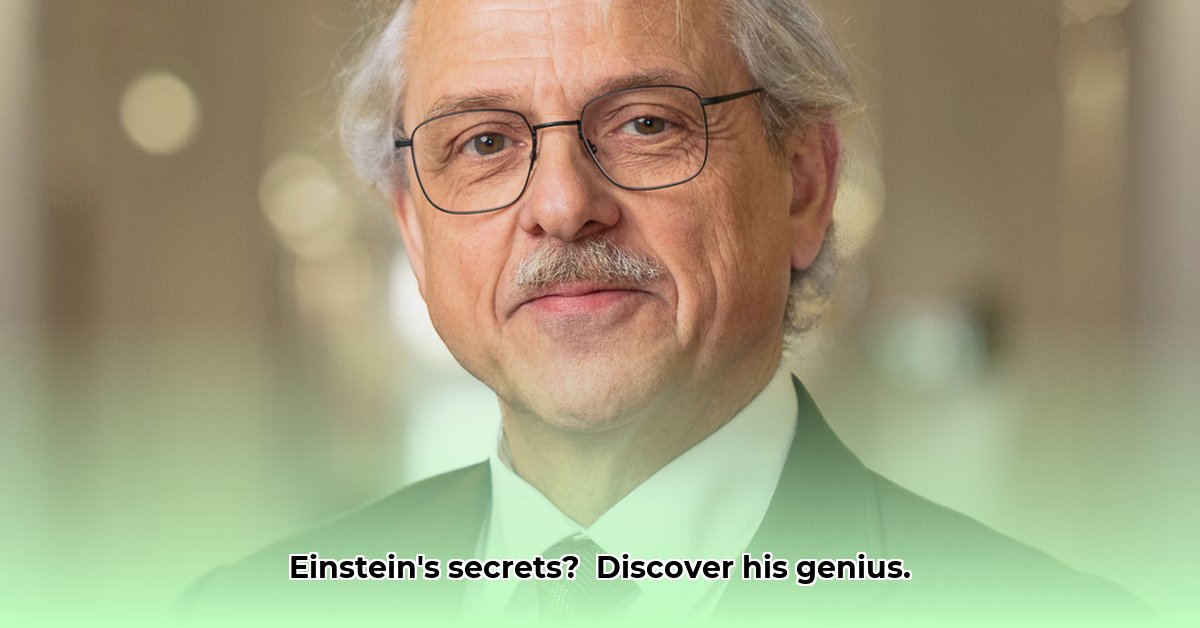Most people know Einstein for his groundbreaking theories, especially E=mc². However, he was also a prolific inventor. This article explores Einstein’s patented inventions, including an innovative refrigerator designed for safety and sustainability, a camera, and a hearing aid. We will delve into their technical principles, evolution, and potential modern applications. To learn more about his family’s legacy of innovation, see Einstein’s Legacy. Get ready to see a new side of this legendary genius!
Albert Einstein Patents and Inventions: A Family Affair of Innovation
Albert Einstein – this name conjures up revolutionary equations. Beyond theoretical physics lies Albert Einstein, the inventor. His time at the Swiss Patent Office profoundly impacted his scientific journey. Handling electromagnetism’s practical applications likely fueled his theoretical breakthroughs, showcasing the synergy between theory and practice.
More Than Just Theories: Diving into Einstein’s Inventions
Einstein’s patents addressed real-world problems. Let’s examine some key inventions:
The Refrigerator: A Safer, Smarter Cool-Down: Einstein and Leo Szilard designed a refrigerator prioritizing safety and efficiency. Older refrigerators used dangerous gases, but Einstein’s design, based on absorption, eliminated this hazard. Powered by heat, it could be connected to renewable energy.
Hearing Aids: A Clearer Sound: Einstein aimed to improve hearing aid technology, focusing on effective sound amplification and audio clarity for his hard-of-hearing friend.
Cameras: Capturing a Sharper Image: In 1935, Einstein and his colleague, Gustav Peter Bucky, patented a camera that could automatically adjust to ambient light by combining a photoelectric cell with a shaft rotation method.
Bernhard Caesar Einstein: Carrying the Torch of Innovation
Bernhard Caesar Einstein, Albert’s grandson, was an electrical engineer with his own patents, largely focusing on improving electronics and laser technology, including night vision devices. He held numerous U.S. patents, working at leading technology firms such as Texas Instruments and Litton Industries, as well as the Swiss Army Research Lab.
Einstein’s Approach to Patents: A Matter of Philosophy
Einstein viewed patents as a means of protecting intellectual property and potentially securing financial independence, allowing him to further his research.
Einstein’s Enduring Legacy: Patents with Present-Day Relevance
Many of Einstein’s patents have surprising modern relevance. His work on the absorption refrigerator concept, for example, offers a blueprint for sustainable cooling solutions. His exploration of sustainable options showcases the potential of revisiting older technologies as we face ecological concerns.
Future Research: Delving Deeper into Einstein’s Inventive Spirit
To unlock the full potential of Einstein’s inventive genius, future research must include:
- Unearth Hidden Archives: A thorough examination of existing archival materials related to Albert and Bernhard Caesar Einstein’s patents and inventions.
- Create a Comprehensive Database: A detailed database of Einstein’s patents, categorized and analyzed across different eras, would provide valuable insights.
- Explore Ecological Applications: Investigating the potential applications of Einstein’s designs within current ecological initiatives is key to finding solutions to global challenges.
- Comparative Analysis: Conducting comparative studies of Einstein’s patenting strategies versus contemporary open-source models will offer a unique perspective.
Looking Ahead: The Future Impact of Einstein’s Inventions
Einstein’s patents, along with his grandson, Bernhard Caesar Einstein’s inventions, reflect the intersection of theoretical physics and practical innovation. His inventive spirit continues to inspire us.
How to adapt Einstein’s refrigerator patent for modern sustainable energy
Key Takeaways:
- Einstein’s time at the Swiss Patent Office significantly impacted his scientific thinking.
- His refrigerator patent, developed with Leo Szilard, offers a blueprint for sustainable cooling.
- Modern adaptations focus on improving efficiency and using renewable energy sources.
- Understanding Einstein’s approach to problem-solving inspires innovation in sustainable technologies.
- Further research is needed to fully realize the potential of his designs.
Einstein: More Than Just E=mc²
While Albert Einstein is known for his groundbreaking theories, he also held several patents. His employment at the Swiss Patent Office (1902-1909) honed his analytical skills. This experience fueled revolutionary breakthroughs in theoretical physics. Einstein said the patent office was his ‘worldly cloister’, where he ‘hatched [his] most beautiful ideas’. His refrigerator stands out for its commitment to innovation and safety.
The Refrigerator: A Safer Alternative
Einstein’s refrigerator was inspired by a Berlin family’s tragic deaths from refrigerator-related gas leaks. He and Leo Szilard collaborated on a safer, more sustainable design. Their 1930 patent used an absorption cycle, avoiding harmful refrigerants and employing a magnetic pump. This made it a key element of how to adapt Einstein’s refrigerator patent for modern sustainable energy.
From Concept to Contemporary Application
Einstein’s refrigerator design, while ingenious, faced commercialization challenges. The technology was not widely adopted primarily due to the emergence of Freon-based refrigerators. However, the core principles are still compelling. Many modern eco-friendly refrigerators use absorption-cycle technology. Scientists are optimizing the magnetic pump component, exploring new materials and renewable energy integration.
Exploring Modern Adaptations: A Path Forward
How to adapt Einstein’s refrigerator patent for modern sustainable energy involves several approaches:
- Material Science Advancements: Utilizing advanced materials with superior thermal properties can boost efficiency.
- Energy Source Integration: Designing systems that seamlessly integrate with solar, wind, or other renewable energy sources reduces environmental impact.
- Miniaturization and Scalability: Developing compact and modular designs makes adaptation for different settings easier.
- Improved Heat Exchangers: Optimizing heat exchange mechanisms between the cooling and heating sides significantly enhances performance.
Einstein’s Legacy: Sustainability and Innovation
Einstein’s patents, including his refrigerator, showcase a commitment to creating innovative and inherently safe solutions. They highlight the far-reaching implications of niche inventions. His work inspires researchers to strive for sustainable and socially responsible technological advancement.
Einstein’s Refrigerator Patent: Sustainable Solutions for Modern Cooling
Key Takeaways:
- Einstein’s lesser-known inventive side offers valuable insights into sustainable technology.
- His refrigerator design, while initially unsuccessful, possesses remarkable contemporary relevance.
- Modern materials science could overcome initial limitations, reviving this eco-friendly innovation.
- Einstein’s Refrigerator Patent: Sustainable Solutions for Modern Cooling is a prime example of retro-innovation.
Beyond E=mc²: Einstein the Inventor
Albert Einstein, synonymous with revolutionary physics, also held a surprising number of patents. His time at the Swiss Patent Office honed his analytical skills, fostering detail and practical problem-solving. This lesser-known aspect of his genius deserves exploration.
The Einstein-Szilard Refrigerator: A Green Vision Ahead of Its Time
One of Einstein’s most intriguing inventions was the absorption refrigerator, co-developed with Leo Szilard. Designed in the 1920s, it sought to address the dangers of toxic refrigerants like methyl chloride. The innovation was a design eliminating moving parts, thus mitigating safety hazards.
Why Did It Fail? A Lesson in Timing and Technology
Despite its ingenious design, the Einstein-Szilard refrigerator didn’t achieve widespread commercial success because Freon, a seemingly simpler and more efficient refrigerant, soon dominated the market. The initial design suffered from inefficiency and noise. Ultimately, factors like timing, the availability of alternative solutions, and technological limitations prevented its widespread adoption.
Reimagining the Past: Modern Applications of a “Retro” Tech
Could Einstein’s refrigerator be revived in the 21st century? Modern materials science, superior manufacturing techniques, and the need for sustainable, off-grid cooling systems make this compelling. Off-grid communities could have reliable, safe refrigeration powered by renewable energy. Initial designs used a potassium-sodium alloy; finding better materials and improving the absorption cycle are crucial. In 2016, Will Broadway won the James Dyson Award for his design of an absorption refrigerator inspired by Einstein’s for use in developing countries.
The Future is Green: Sustainable Cooling Solutions
Research institutions, manufacturers, governments, and consumers all have roles to play in bringing this technology to fruition. Governments must incentivize environmentally friendly cooling technologies. Consumers need to be more conscious of sustainability when purchasing appliances.
Bernhard Ceasar Einstein’s Contributions
Bernhard Ceasar Einstein, Albert’s grandson, also contributed to engineering and technology with patents of his own. He worked at the Swiss Army Research Lab in Thun, and his inventions, particularly in laser technology, could have potentially influenced the capabilities of Swiss military equipment.










